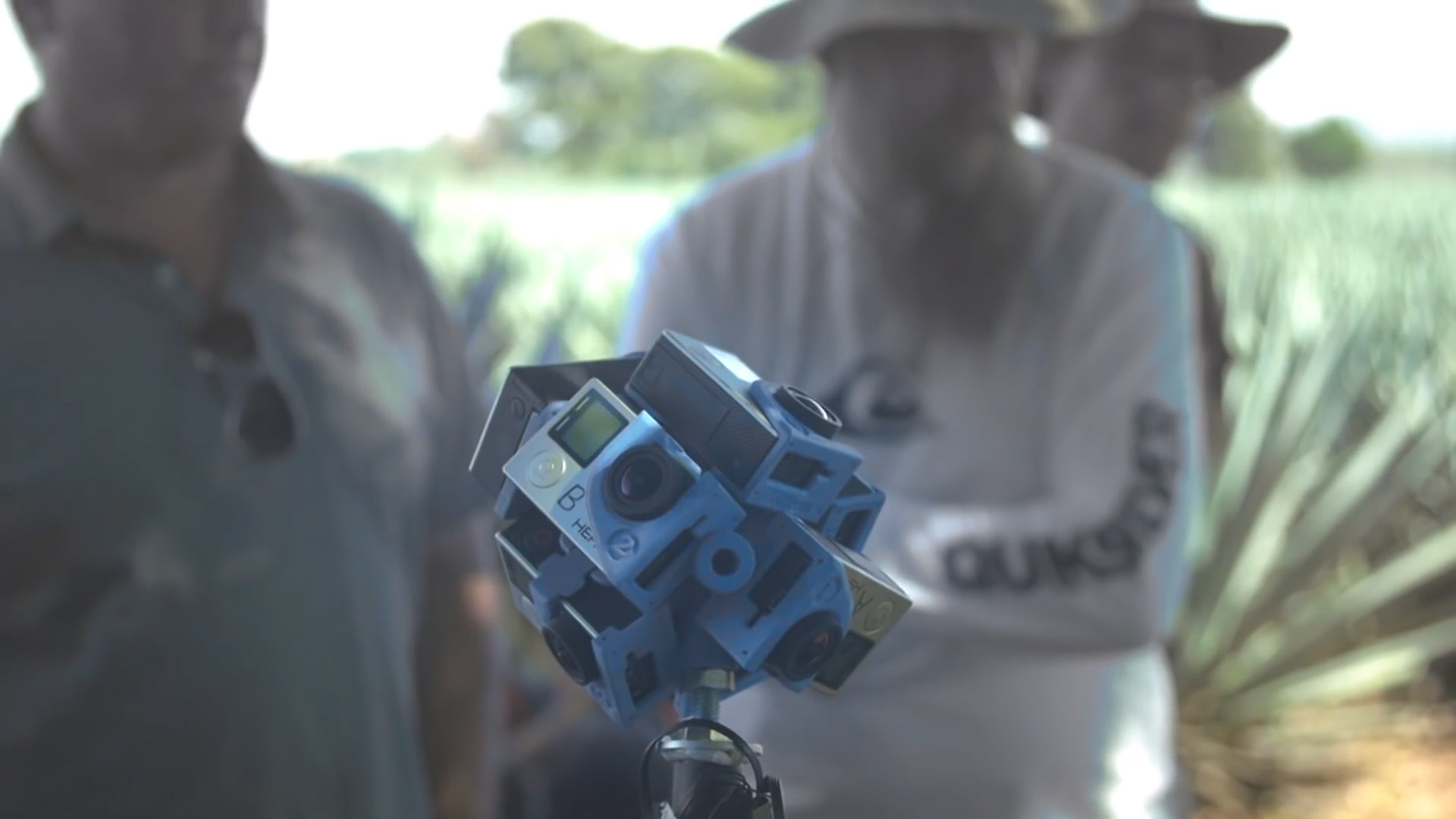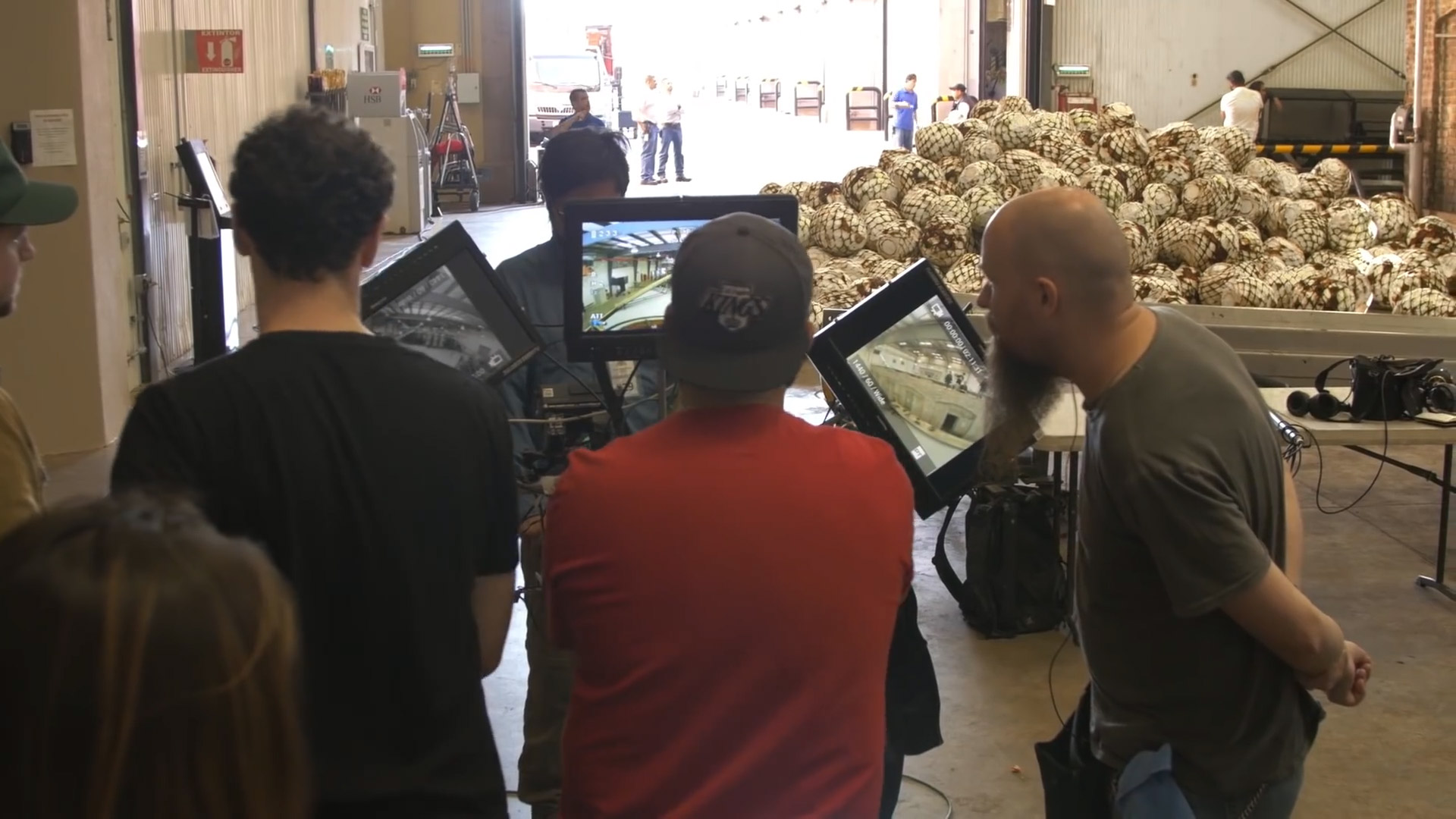
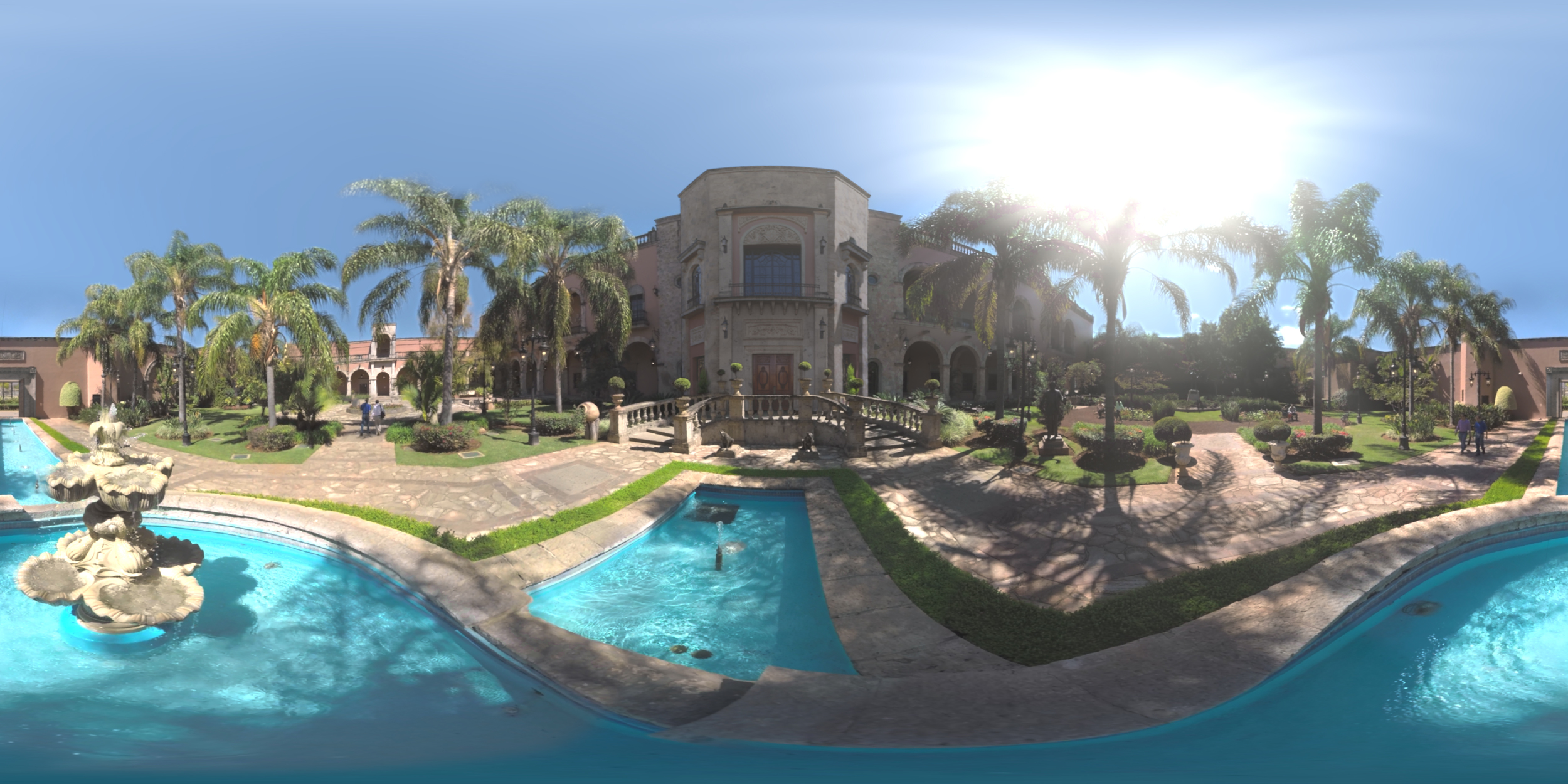

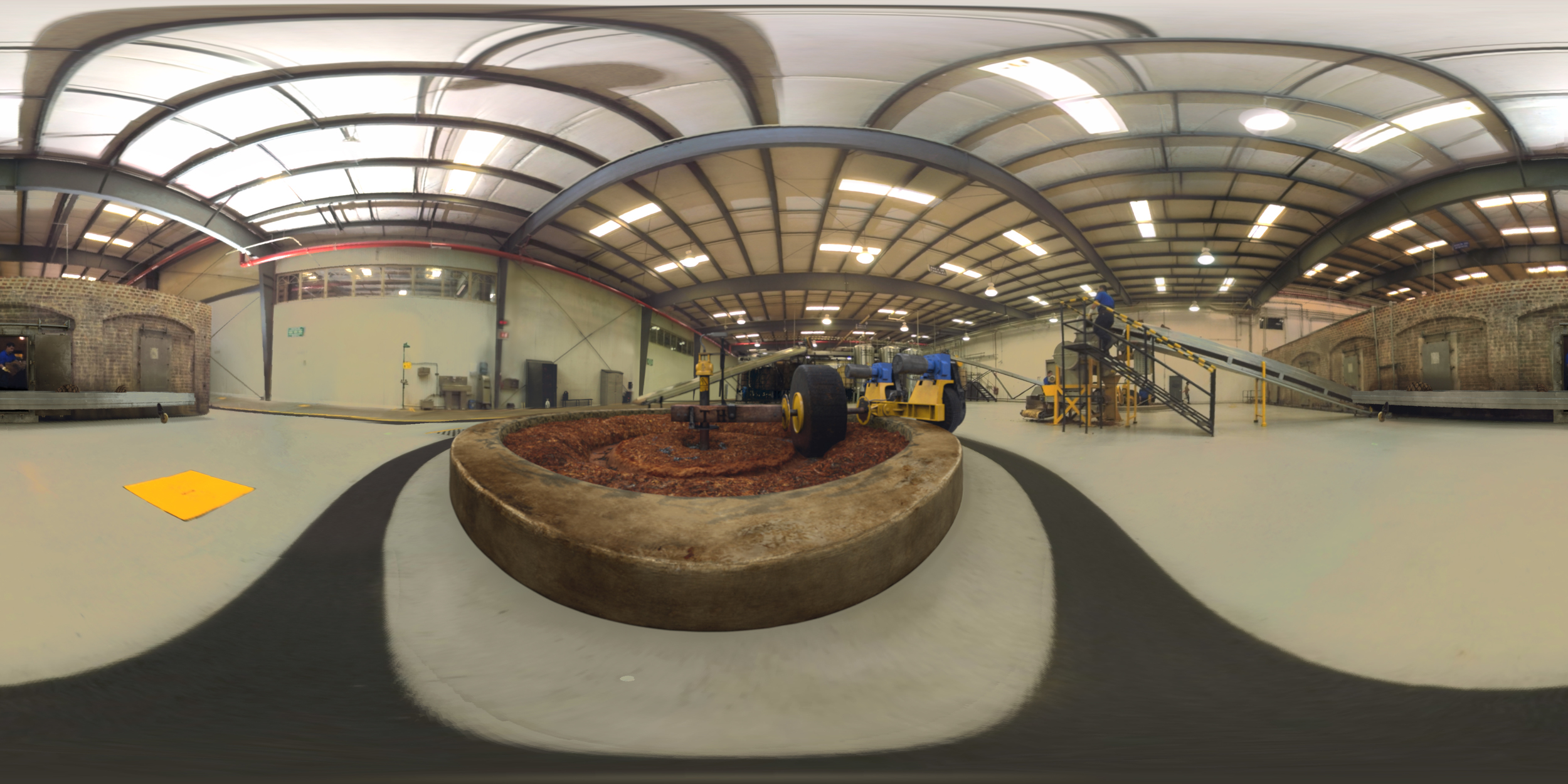
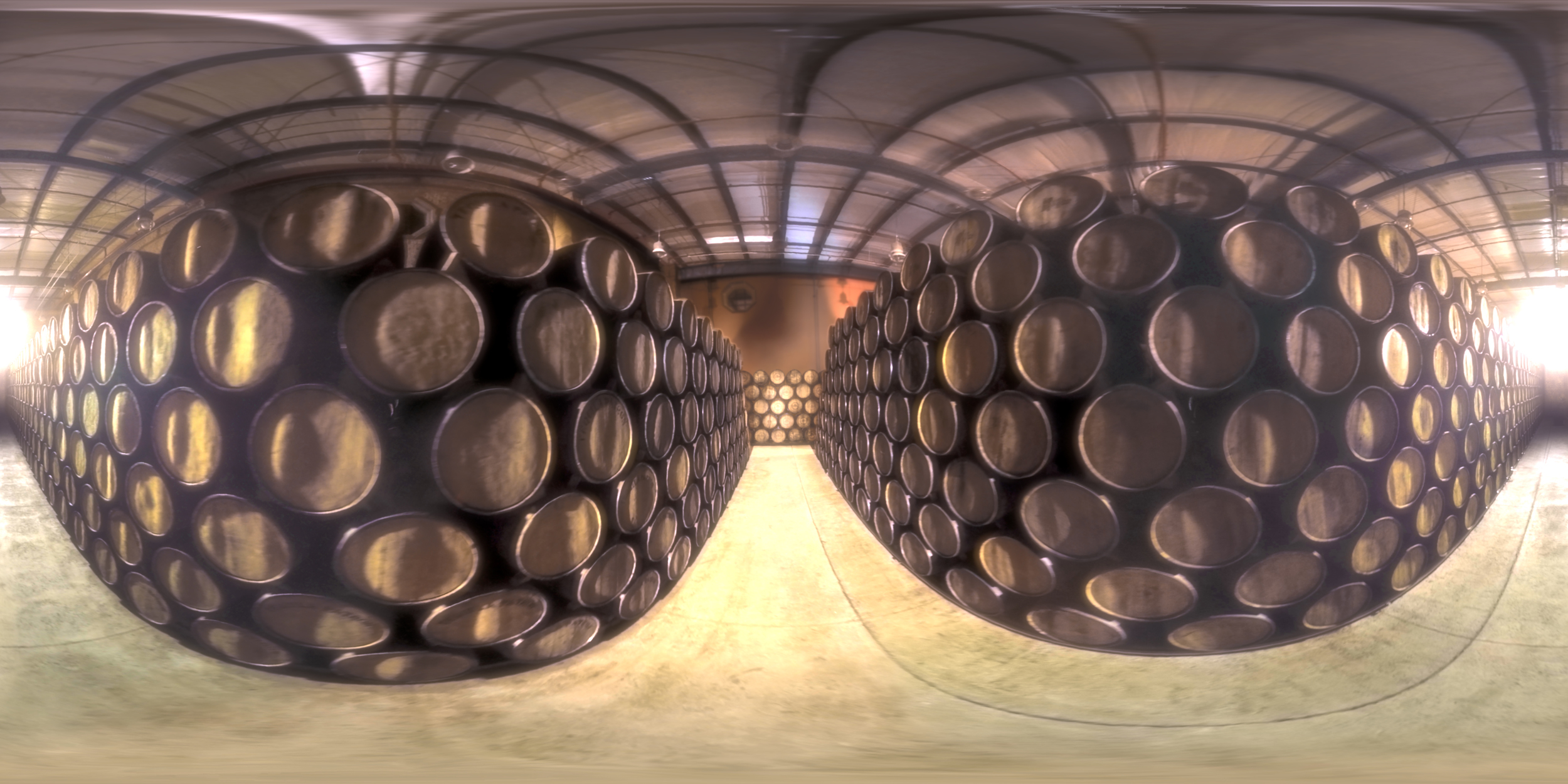
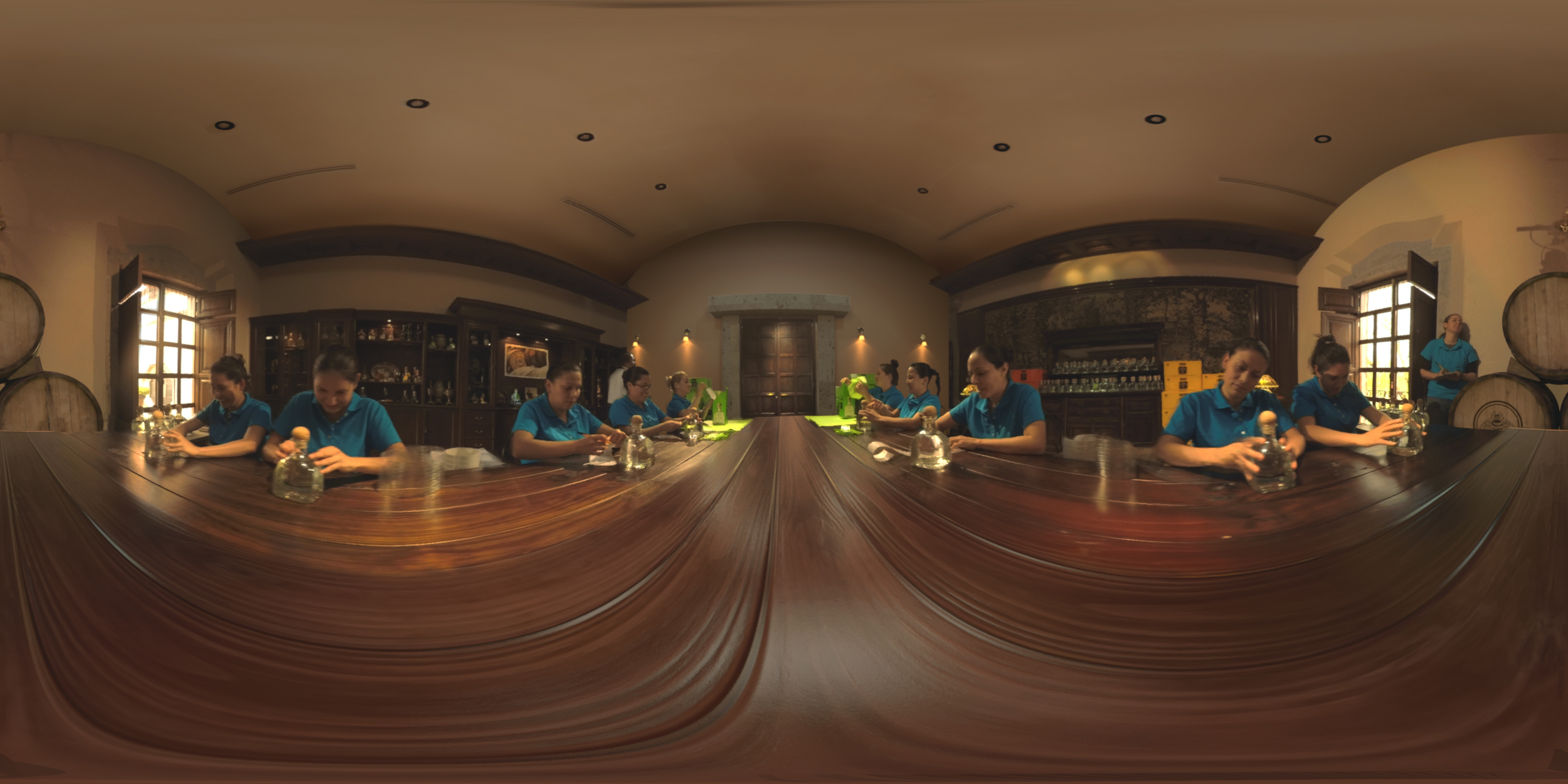
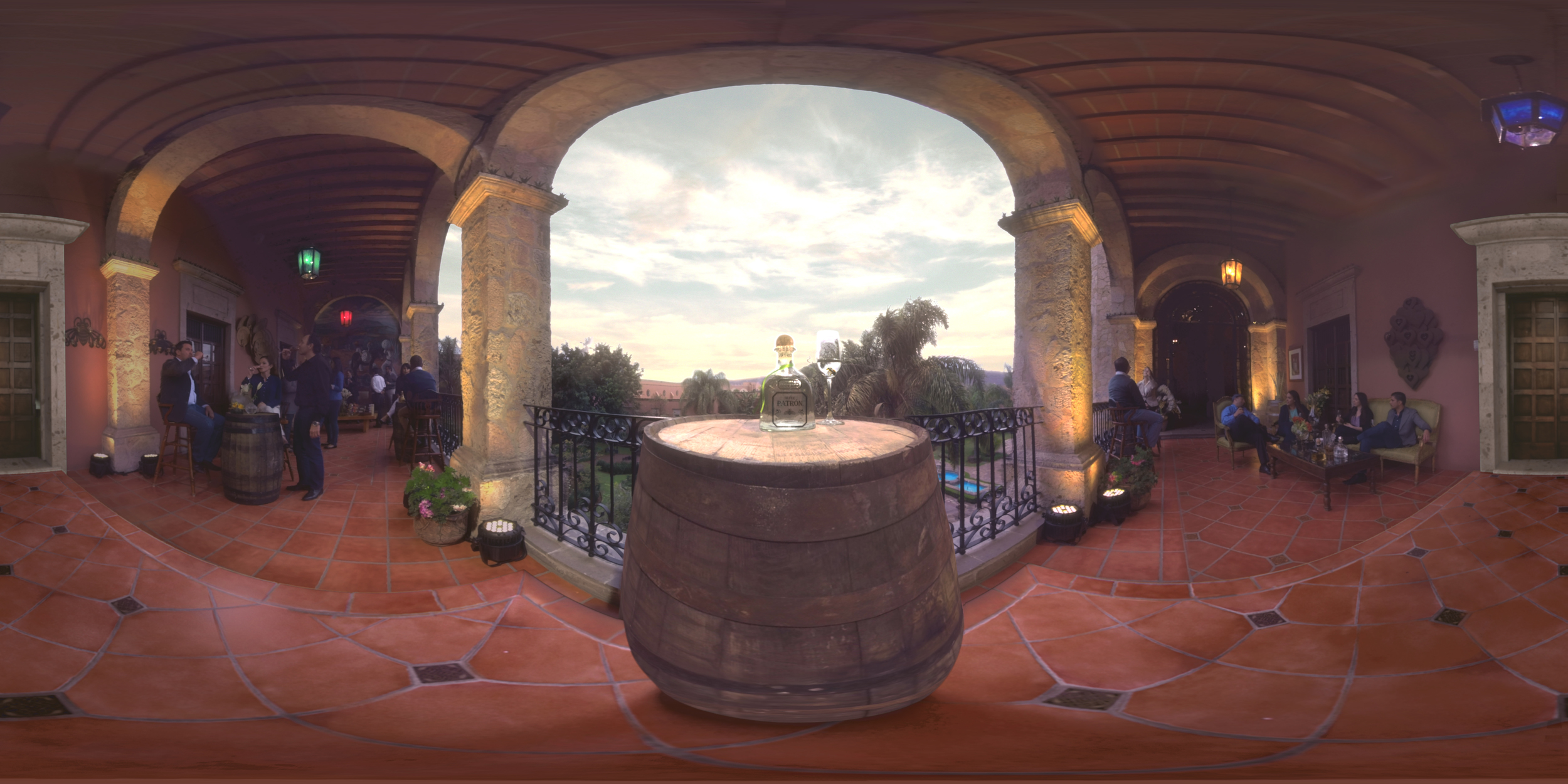
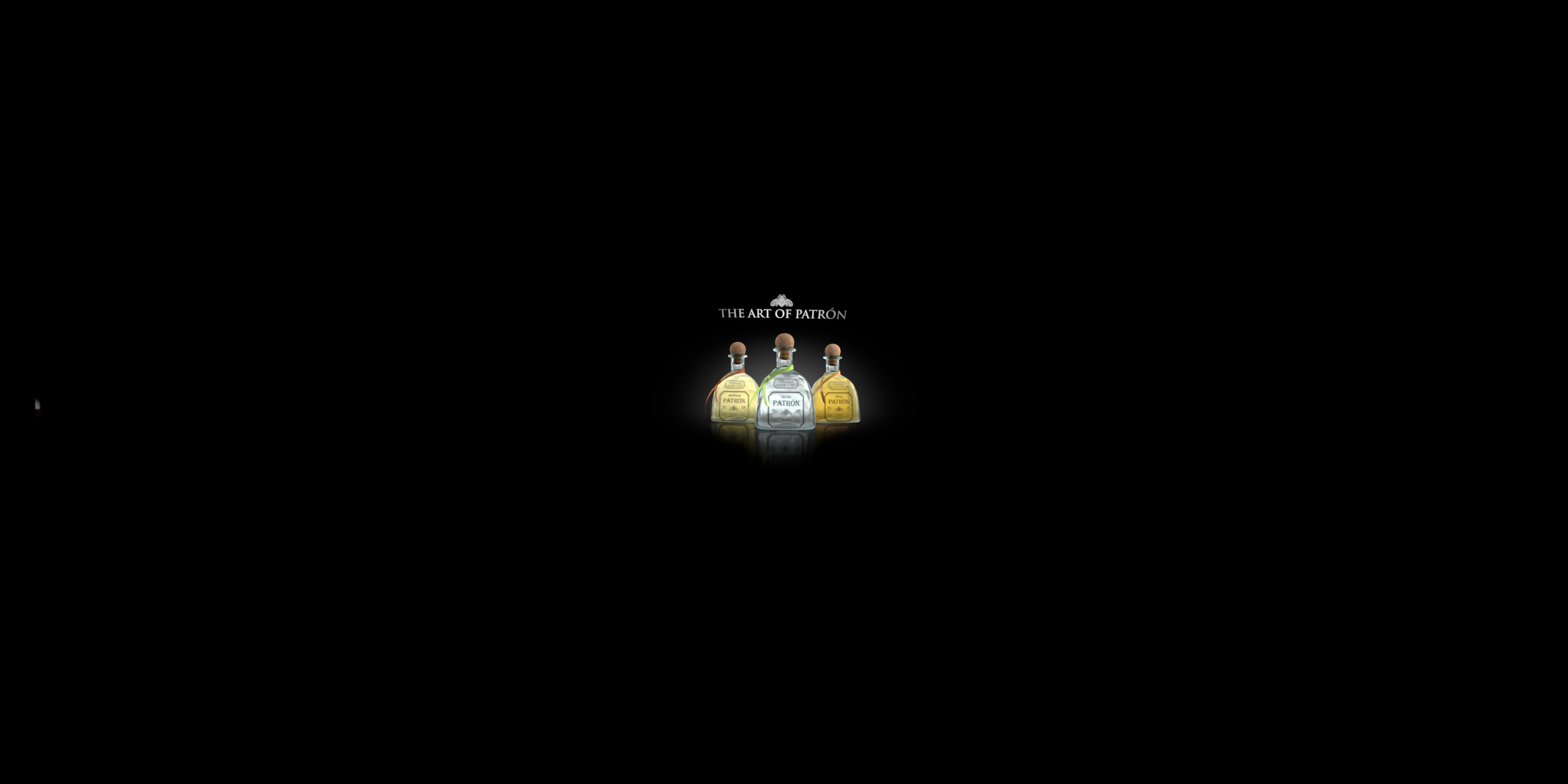
"The Art of Patron" was first brought to me by my good friend and colleague Mark Kudsi. Mark is a director represented by aWhiteLabelProduct. They were approached by the agency FirstBorn, out of New York, to create and execute a VR experience transforming the viewer to a bumble bee and flying through the Patron Distillery experiencing all the different phases producing a fine bottle of Patron Tequila.
One of the reasons that FirstBorn chose Mark Kudsi as director was due to his approach. Rather than shooting the VR experience in stereo, he proposed that they shoot 2D, and 'convert' it to stereo. This eliminates a lot of headache when it comes to the production, and reduces the risks of not delivering on time. Firstborn had experience with VR before, and wanted to try this process.
I was completing "The Walk" during the production of this, so I was unable to go to Mexico for the scout and shoot, however I was not concerned, I had an incredible VR supervisor, Justin Denton, assigned. Justin built a great report with Mark and the rest of the FirstBorn team.
In Mexico, Mark and Justin used my Ricoh Theta on a mono-pod to create a rough cut of the whole experience. That cut was used as a guide for the team, and made it clear that we needed this spot to be longer than :45 to make the most of the experience. I believe the final TRT was 2:10. During this process we also discovered that we would need to stabilize the roll/pitch/yaw so the viewer would have their own control over their field of view, and not feel like they have to fight against motion that is baked into the experience.
After seeing the footage from the Theta, it became clear that we would need to employ the use of drones to get some of these impossible shots and also make the viewer feel as if they were a bee. We hired a Carlsbad based company Aerial Mob to help us plan and execute the shots with their custom drones.
In terms of the camera rig we did a lot of research, and at the time (March 2015) the lightest, highest quality, 2D camera rig we could get our hands on was the 7 camera 360Hero GoPro rig. Justin did a lot of preproduction and R&D so he could be nimble on set with the cameras. Justin, and the DIT, rigged up 3 HDMI panels that received a signal from the 3 front facing GoPros so Mark was able to see the trajectory of the drone. This way he could know that the action was being captured in realtime. Once a setup was complete, Justin would load the frames from all cameras onto his laptop, and used Video Stitch to get a rough stitch that was viewable in the Oculus DK2 from video village. Allowing Mark to pick his circle takes for final stitch, it also let Justin and the rest of the crew know that all the GoPro's fired when they were supposed to. One of the issues we had during this time was that there was no easy way to sync the cameras since they are not gen-locked.
This was one of the first VR projects that integrated live action 360 with CG elements. All the transitions needed bits of CG to make them seamless. Firstborn took on the CG, but our team took on all the 360 camera tracking and stabilizing. We handed that to Firstborn for CG integration, while we painted out the drone and completed the 2D 360 stitches.
The final 2D experience was then converted at Legend3D using the proprietary conversion tools that I helped develop during my tenure there. The results are incredible, and additionally, there is no way we could have produced this in the amount of time, with a high quality bar, if it was shot in 3D with 14 cameras.
I am very pleased with the results, but most of all, I am proud of what we learned and can apply to future projects that are similar in nature.

